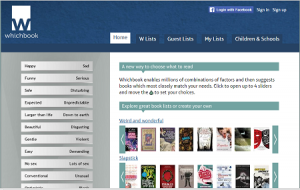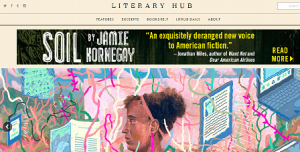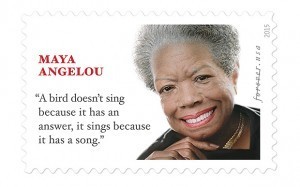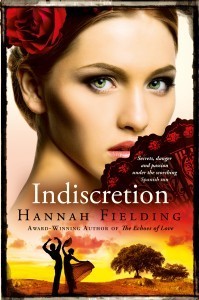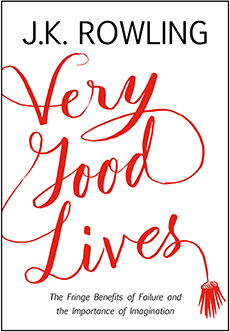Hannah Fielding's Blog, page 85
April 20, 2015
Rehoming the forgotten books
 Here’s a simple fact of the publishing industry: many more books are printed than are read. In the UK, for example, according to data compiled by theInternational Publishers’ Association, in 2014 UK publishers released more than 20 new books every hour.The Brits published more books per inhabitant than anywhere else in the world.
Here’s a simple fact of the publishing industry: many more books are printed than are read. In the UK, for example, according to data compiled by theInternational Publishers’ Association, in 2014 UK publishers released more than 20 new books every hour.The Brits published more books per inhabitant than anywhere else in the world.
This is “either a sign of cultural vitality or publishing suicide”,Jonny Geller at Curtis Brown literary agency told the Guardian. “Of course, it is utter madness to publish so many books when the average person reads between one and five books a year…”
So what happens to the many books that aren’t sold? Retailers return the remainders to the publishers, and many of these books are pulped. Yes, destroyed.
Now, when it comes to pulping, emotions run high for many people. Currently, for instance, Manchester Central Library is hitting the headlines amid fears of mass pulping to make room for a renovation. When authors learned of the plan to pulp 240,000 books, they began a campaign to save the books, calling the pulping “cultural vandalism on an industrial scale”.
What happens to such books after the pulping? A memorable example emerged in 2013, when building materials suppliers Tarmac announced that the M6 Toll motorway in the UK had incorporated 2.5 million pulped Mills & Boon romance novels (apparently, the pulp helps hold the Tarmac and asphalt in place and acts as a sound absorber).
Useful as the pulp may be in road construction, many bibliophiles detest the thought of a book being destroyed. Enter the growing empire of the bargain book sellers. Once upon a time, bargains were to be found only in those treasure troves known as second-hand bookstores, and on stalls (I have always loved the stalls on the Southbank in London near the National Theatre). But in recent years it is digital that has exploded, and with it a marketplace for buying second-hand and remaindered books online.
In a recent article in the Guardian, Calum Marsh explored the world of the penny books. Go on Amazon, find a book you like, and it’s a pretty good bet that you can find a used copy for sale for little more than a penny plus postage. How on earth does the seller make money? The answer is volume. As one seller explained, he makes only a few cents on such sales, but then he sold 11.5 million books last year – that’s a lot of pennies!
Such sellers are rescuing countless books from their fate at a pulping plant or landfill site. As Marsh explains, “These used book sellers are providing an indispensable public service: they’re redirecting the world’s flow of used books from extinction to readers who can care for and appreciate them.” And it’s not only sellers who are saving the books; charities have weighed in as well. Better World Books, for example, has donated more than 50million books and reused or recycled more than 153million books.
The point is that books are to be treasured. Destruction is so fast, so easy, but irreversible.Whenever I think of books ‘dying’, I feel so saddened and I am reminded of Khalid Masood’s words: “A moment of time can destroy the universe.”
Save the book. Save them all!
April 16, 2015
Reasons to admire Spanish artist Joan Miro
When I write a novel, I immerse myself in the culture of the country in which the story is set. For my new novel Indiscretion, that was a sheer delight, because I have adored Spain since I first visited the country as a young woman. Because I am a keen lover of art (one of the reasons I set my novel The Echoes of Love in Venice, home of the Italian Renaissance), this is an area of culture I research first. Happily, I was already very familiar with one of the best-known artists, Joan Miro, because he has long been an artist I admired, for these reasons.
The playfulness and vibrancy of his art
Here’s a glimpse of just some of his many artworks. I love the vivid colours, which are so symbolic of Spain; the joy that comes through; the childlike quality to the works.
The wealth of mediums used
Miro was a painter, a ceramist and a sculptor, and he excelled in each medium. His sculptures, for example, are to be found the world over, from a Parisian garden to a Chicago plaza.
He was also unafraid to try a new medium. In 1974, when he was asked to work with Catalan artist Josep Royo on a tapestry for the World Trade Center, New York, he learned the craft from scratch. (Sadly, their valuable tapestry was destroyed in the 9/11 attacks.) In his final years he was exploring the potential for sculpting from gas and creating four-dimensional paintings.
His many books
Miro documented his thinking and art so well that he has left a powerful legacy for artists who follow him. In his lifetime he created more than 250 livres d’ artiste, containing lithographs that add greatly to his body of work.
His maverick and principled approach
Miro wanted to break away from art being the domain of the bourgeois. He intended to unleash an‘assassination of painting’, using his Surrealist approach to reimagine ways to paint.
He was also a principled man. His political stance that found expression in his art forced him to live away from Spain during the civil war, and his pride in his Catalan heritage did not make life under Franco easy.
Above all, he took his art seriously. He said: “The works must be conceived with fire in the soul but executed with clinical coolness.”
And finally…
Here are some facts about Miro you may not know:
His first solo show at the Dalmau Gallery, Barcelona, in 1918 was a spectacular flop, yet he kept going.
His early work was inspired by Vincent van Gogh and Paul Cézanne.
Ernest Hemingway bought one of his early paintings, ‘The Farm’, and described it thus, “It has in it all that you feel about Spain when you are there and all that you feel when you are away and cannot go there. No one else has been able to paint these two very opposing things.”
Pierre Matisse, son of the artist Henry, brought Miro’s work to the US when he exhibited it in his New York City art gallery.
Miro’s works are on display all over the world, but the place to visit if you are interested in Miro is the Joan Miro Foundation in Barcelona: http://www.fundaciomiro-bcn.org/fundaciojoanmiro.php?idioma=2. Even the building, designed by Josep Lluís Sert, is inspirational.
April 14, 2015
Digital roundup April
I’ve been following publishing news ever since I began publishing my romance fiction, and in recent months it’s become apparent that digital is dominating the news. This week, three stories jumped out at me:
Whichbook
Here’s a new site that matches a book to your mood. According to the site,‘Whichbook enables millions of combinations of factors and then suggests books which most closely match your needs.’
Uniquely, the site has a set of sliders you can adjust to create the perfect match, from conventional to unusual, optimistic to bleak, safe to disturbing, funny to serious, no sex to lots of sex and short to long. You can also browse interesting categories, like ‘A terrible beauty’ and ‘Comfort zone’ and ‘Pure entertainment’.
According to Whichbook, the titles are collated by ‘a changing team of 70 people who are drawn from libraries and literature organisations and come together to share training to create the entries. The ratings and comments are created by real readers who care about books.’
Interestingly, the site doesn’t focus on the biggest bestsellers but tries to introduce readers to lots of intriguing and less well-known titles. Indeed, with just a minute of clicking I was offered a list of suggestions, and two of the books in that list were new to me and looked intriguing.
Well worth a visit, at http://www.openingthebook.com/whichbook/.
LiteraryHub
This new website aims to be ‘a single, trusted, daily source for all the news, ideas and richness of contemporary literary life’.
‘There is more great literary content online than ever before, but it is scattered, easily lost. With the help of its partners—publishers big and small, journals, bookstores and non-profits—Literary Hub will be a place where readers can return each day for smart, engaged, and entertaining writing about all things books.’
So reads the Literary Hub mission statement. The list of partners for this new venture launched by independent publisher Grove Atlantic and books site Electric Literature is lengthy and impressive, bringing together small presses and giant ones, booksellers and literary reviews.
Each day the Hub will offer a new feature (an interview, for example, or an essay), and an excerpt from a forthcoming title. LitHub Daily, available as a newsletter, will highlight ten literary stories of the day.
This isn’t a website looking to sell books – in fact, it especially doesn’t want to tread on the toes of bricks-and-mortar bookstores. The business model is simple: exchange content for advertising on the site.
I’ve signed up for the newsletter already, and when I browsed the features section, I got entirely immersed in the intelligent, interesting material (Martin Solares’s ‘How to Draw a Novel’ is amazing). If you haven’t checked out Literary Hub yet, you’re missing out.http://lithub.com/
Oyster
Oyster has been dubbed ‘the Netflix of e-books’ – until recently, it specialised in offering subscription-based reading for ebooks. But now it has decided to set up its own ebook store. A brave move indeed, given that its principal competitor will be the behemoth Amazon.
An argument that supports more competition in the market is that publishers have begun to standardise ebook prices, which means ebook buyers won’t so much choose their bookstore for ebooks based on price in the future, but based on other factors, such as the ease and pleasure of the shopping experience. ‘You’ll have to compete on other things like discovery and design,’said Oyster CEO Eric Stromberg. Access to Amazon’s e-reader is problematic, however.
The bottom line appears to be that subscriptions alone aren’t enough to make a profitable business in the book publishing sphere. Penguin Random House’s CEO said at the Futurebook conference, ‘“Eat everything you can” isn’t a reader’s mindset. In music or film you might want 10,000 songs or films, but I don’t think you want 10,000 books.’According to research, the proportion of people who read more than a book a week is very small, so subscriptions are catering to a very small market.
Have you tried a reading subscription service? If so, I’d love to know how you got on with it.
Digital roundup
I’ve been following publishing news ever since I began publishing my romance fiction, and in recent months it’s become apparent that digital is dominating the news. This week, three stories jumped out at me:
Whichbook
Here’s a new site that matches a book to your mood. According to the site,‘Whichbook enables millions of combinations of factors and then suggests books which most closely match your needs.’
Uniquely, the site has a set of sliders you can adjust to create the perfect match, from conventional to unusual, optimistic to bleak, safe to disturbing, funny to serious, no sex to lots of sex and short to long. You can also browse interesting categories, like ‘A terrible beauty’ and ‘Comfort zone’ and ‘Pure entertainment’.
According to Whichbook, the titles are collated by ‘a changing team of 70 people who are drawn from libraries and literature organisations and come together to share training to create the entries. The ratings and comments are created by real readers who care about books.’
Interestingly, the site doesn’t focus on the biggest bestsellers but tries to introduce readers to lots of intriguing and less well-known titles. Indeed, with just a minute of clicking I was offered a list of suggestions, and two of the books in that list were new to me and looked intriguing.
Well worth a visit, at http://www.openingthebook.com/whichbook/.
LiteraryHub
This new website aims to be ‘a single, trusted, daily source for all the news, ideas and richness of contemporary literary life’.
‘There is more great literary content online than ever before, but it is scattered, easily lost. With the help of its partners—publishers big and small, journals, bookstores and non-profits—Literary Hub will be a place where readers can return each day for smart, engaged, and entertaining writing about all things books.’
So reads the Literary Hub mission statement. The list of partners for this new venture launched by independent publisher Grove Atlantic and books site Electric Literature is lengthy and impressive, bringing together small presses and giant ones, booksellers and literary reviews.
Each day the Hub will offer a new feature (an interview, for example, or an essay), and an excerpt from a forthcoming title. LitHub Daily, available as a newsletter, will highlight ten literary stories of the day.
This isn’t a website looking to sell books – in fact, it especially doesn’t want to tread on the toes of bricks-and-mortar bookstores. The business model is simple: exchange content for advertising on the site.
I’ve signed up for the newsletter already, and when I browsed the features section, I got entirely immersed in the intelligent, interesting material (Martin Solares’s ‘How to Draw a Novel’ is amazing). If you haven’t checked out Literary Hub yet, you’re missing out.http://lithub.com/
Oyster
Oyster has been dubbed ‘the Netflix of e-books’ – until recently, it specialised in offering subscription-based reading for ebooks. But now it has decided to set up its own ebook store. A brave move indeed, given that its principal competitor will be the behemoth Amazon.
An argument that supports more competition in the market is that publishers have begun to standardise ebook prices, which means ebook buyers won’t so much choose their bookstore for ebooks based on price in the future, but based on other factors, such as the ease and pleasure of the shopping experience. ‘You’ll have to compete on other things like discovery and design,’said Oyster CEO Eric Stromberg. Access to Amazon’s e-reader is problematic, however.
The bottom line appears to be that subscriptions alone aren’t enough to make a profitable business in the book publishing sphere. Penguin Random House’s CEO said at the Futurebook conference, ‘“Eat everything you can” isn’t a reader’s mindset. In music or film you might want 10,000 songs or films, but I don’t think you want 10,000 books.’According to research, the proportion of people who read more than a book a week is very small, so subscriptions are catering to a very small market.
Have you tried a reading subscription service? If so, I’d love to know how you got on with it.
April 13, 2015
The importance of attribution
Regular readers of my blog and followers on Twitter will know that I love quotations – little nuggets of wisdom to make you smile, make you think, make you feel, make you connect. With the growth of the internet, there has developed a proliferation of websites and blogs that collate quotations, so that you can find a quote for any occasion on just about any subject matter. My personal favourites are The Quote Garden, which organises quotes into diverse subjects and brings some really novel and interesting quotations into the mix, and also Goodreads, which provides quotes from a literary angle.
That quotations are being so widely shared is a wonderful, inspirationaldevelopment. But it exacerbates an age-old problem with accuracy. Plenty of quotes are inaccurate in one (or all) of three ways.
An unfaithful representation of the original wording. Take the oft-quoted line from Casablanca: ‘Play it again, Sam.’ If you watch the movie, you find that the line is in fact simply,‘Play it, Sam.’ A subtle difference, but a difference all the same.
An invented line never delivered by the author him-/herself. ‘Elementary, my dear Watson.’ Surely a line from Sir Conan Doyle’s Sherlock Holmes works? No, in fact it’s from a book called Psmith, Journalist by P.G. Wodehouse.
A faithful representation of original wording, but attributed to the wrong person. For example, these words were made famous in Nelson Mandela’s inaugural address: ‘Our deepest fear is not that we are inadequate. Our deepest fear is that we are powerful beyond measure. It is our Light not our Darkness, that most frightens us.’ Many incorrectly assume that these were Mandela’s own words, but they are from Marianne Williamson’s 1992 book A Return to Love.
The problem of misattribution has been hotly discussed in the last week, thanks to this stamp released by America’s postal service:
The stamp commemorates beloved writer and poet Maya Angelou, who died last year. Angelou is most famous for her autobiographical series, especially the first: I Know Why the Caged Bird Sings. The quote on the stamp certainly falls into line with this book title, and with sentiment within the book.
But another author, Joan Walsh Anglund, has come forward to claim the quotation as her own. The line in fact appears in Anglund’s poem book A Cup of Sun, which was published in 1967, two years before Angelou’s I Know Why the Caged Bird Sings.
The misattribution of this quote is so common, the postal service can surely be forgiven for the mistake. Even Barack Obama cited the quote when he awarded Angelou with the 2013 National Medal of Arts and National Humanities Medal.
What of Anglund? Well, she has been wonderfully gracious. She said:
‘It’s an interesting connection, and interesting it would happen and already be printed and on her stamp. I love her and all she’s done, and I also love my own private thinking that also comes to the public…’
Attribution is important, though of course at times mistakes will occur, and the public will take for their own a quotation and change it. But I’ve been glad to see the media covering this incident, for the sake of both the writers in question: Anglund, who deserves credit for the beautiful words she created, and Angelou, who wrote so many beautiful and compelling words herself that she deserves to be remembered for those.
What do you think of the stamp? Were you, as I was, saddened to see a trend on Twitter for posting the stamp with another non-Angelou quote, which is surely disrespectful to her memory? Do you have examples of other misattributions that amuse, concern or frustrate you? I would love to hear your thoughts.
April 10, 2015
The era of Indiscretion: 1950s Spain
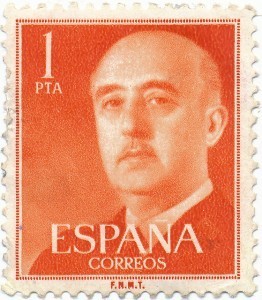 Readers of my new novel Indiscretion will find themselves transported not only to a beautiful location – the ancient cities and wild landscapes of Andalusia, Spain – but also to another time.
Readers of my new novel Indiscretion will find themselves transported not only to a beautiful location – the ancient cities and wild landscapes of Andalusia, Spain – but also to another time.
What do you expect of a novel set at the beginning of the 1950s? This was a decade in which many Western countries saw widespread changes. The Second World War had changed societies forever, and the transformations that had begun gathered pace in the post-war years. Every element of lifewas in flux. Many women, for example, had worked during the war, while the men were at the front, and were now unwilling to relinquish their newfound independence and freedoms. The scene was set for a movement that would culminate, in the 1960s, with major civil reforms and an entirely new way of living that forms the basis of how we live today in countries like France and the UK and the US.
But what about Spain? In the era in which Indiscretion is set, you may expect Spain to have been keeping pace with other countries. It was not. After a long civil war, General Franco had claimed victory. His policy was one of authoritarianism and isolationism. He was not, unlike leaders of contemporary countries, looking to build Spain into a modern, forward-thinking nation that bestowed rights and liberties on its citizens. His ‘New Spain’ was a place locked into the old ways; a visit to some parts of Spain, like the area of Andalusia in which my story is set, was like stepping back in time. Take, for example, Alexandra’s first glimpse of Spain:
The hundred-year-old steam locomotive lurched through a parched yellow and brown countryside on worn-out tracks, winding north along Andalucia’s rocky coast. The train was crowded, but amazingly, at every stop, more people managed to force themselves in, driving into even closer intimacy those who were already packed in. Spaniards, Alexandra noticed, seemed to journey with an obligatory stock of food, and that of the passengers was now roped on the luggage racks above their seats. At the last station, a huge barrel of a man had boarded the train with a basket, from which protruded the head of a protesting goose.
Further on:
The carriages of the train had been stuffed to bursting with baskets of clucking hens, men whistling and shouting to each other, women with luggage and paraphernalia piled high against the windows, and even the odd goat or two.
The train had high-backed wooden benches, the seating arranged in cubicles on either side of a gangway. Some of the windows were broken, and people climbed through them to grab a seat. A chattering, shouting medley of voices had filled the carriage – there was none of the usual reserved and dignified behaviour Alexandra had read about in the books about the Spanish that she’d picked up at her local library. The strange smells of food, sweat and livestock permeated the atmosphere.
The train is old, with broken windows, and the tracks are worn out. The carriage is very overcrowded, and the people aren’t what Alexandra is used to back home, in London: they clamber in windows, they squeeze in too close, they’re rowdy, they carry livestock.
This is Franco’s New Spain, which her Aunt Geraldine tried to warn her off. It was madness, Aunt Geraldine said, for a woman to travel unchaperoned in such a conservative country,not to mention one still broken and impoverished by civil war. Unchaperoned? It seems like such an old-fashioned word, doesn’t it, in a 1950s-set novel. But it is apt. Alexandra, who in London was an independent young woman who enjoyed plenty of freedom, has stepped into a very different society in which she faces old-fashioned prejudices and expectations.
And when you are trying to make a life for yourself in a society that is so quashing of your natural desires and spirit, avoiding any kind of indiscretion becomes very difficult indeed…
April 8, 2015
The secret language of the Spanish fan
A cultural symbol of Spain known around the world, the Spanish fan exudes romance and passion. So much so, it is an important symbol on the cover of my new novel, Indiscretion:
While the fan may have begun its life in Spain back in the 14th century as a practical object for staying cool in the sultry heat, when flamenco dancers began incorporating them into their dances, the nobility took notice. Then, when the design of fans became ever more beautiful, they secured a place as an essential accessory for all Spanish women. Soon, they came in all manner of colours and sizes, and were adorned with everything from lace to feathers. Many Spanish women built up quite the collection!
With fans so commonplace and so versatile in their movement, they became the ideal means by which to communicate without words – a sort of semaphore via fan. Thus the señoritas of the 19th century developed their own secret language of the fan. This was a time when young ladies were always chaperoned, and speaking to a prospective beau was nigh-on impossible. But in time an interested young man could discern the lady’s mood or desire simply by watching how she moved her fan.
Here’s a look at the some of the common ways to communicate with the fan:
Short, fast sweeps across the chest: I’m unavailable to you.
Slow, seductive sweeps across the chest: I’m available to you.
Closed fan carried hanging in the left hand: I’m available and on the lookout.
Open fan touched to the cheek: I like the look of you!
Open fan covering the mouth with smouldering eyes: I’m blowing you a kiss.
Closed fan tapped urgently on palm: Careful! We’re being watched.
Hitting fan on dress: I’m jealous.
Giving fan to the young man: I’m yours.
Pointing the fan: Meet me over there.
Covering face with fan: It’s over between us.
Fiddling with fan: Hurry up!
Fascinating, don’t you think? Wouldn’t it be wonderful to attend a traditional ball, dressed up beautifully, and to forbid words entirely, so that the only sound is the room is music and all communication is carried out by way of the fan and facial expressions? I think that would make a beautiful scene in a film – imagine the seductive tension in the room!
If, like me, you find fans beautiful and their history very interesting, these museums worldwide are worth a visit:
The Musée de l’Éventail (Fan Museum) in Paris, located within the Atelier Anne Hoguet, a workshop for fan-making and restoration.
The Hand Fan Museum in Healdsburg, California, which has more than 2,500 fans in its collection.
The Fan Museum in Greenwich, London, which has 4,000 fans, on rotation, the oldest of which dates from the 10th century.
April 7, 2015
The most spectacular libraries in the world
Regular followers of my blog will know I am an ardent bibliophile, and that extends to an adoration of those places dedicated to connecting us with books: libraries. I wholeheartedly agree with Jorge Luis Borges: “I have always imagined that Paradise will be a kind of library.” The dust motes floating dreamily in a shaft of sunlight, the scent of old books and varnished wood, the beautiful tranquility and sensitivity shimmering in the atmosphere – this is any book lover’s haven.
I was delighted this week, then, to find two articles in the news celebrating unique and innovative library design.
First, the announcement that the FLUX Foundation intends to build a library for the Bay Area Book Festival in June. Exciting in itself, but then we come to the materials with which the library will be constructed. Not bricks. Not wood. Books! In total, 50,000 books are waiting to be formed into the library, an art installation that will stand in the MLK Civic Center Park in Berkeley, CA.
Project Lacuna has been devised with the following vision (source):
Libraries connect us—to each other, and to ourselves. They nurture our communities with knowledge and ideas, and they provide spaces for discussion and reflection. They open us to worlds unknown, and they reflect our worlds back to us. Libraries are monuments to the pursuit of knowledge, and to the universal right to seek, nurture, and possess knowledge.
Lacuna is a library whose very walls are constructed with books. Like a library, access is entirely free, and visitors will be able to peruse shelves and remove books that capture their imagination. As books are removed from Lacuna, the structure will morph—gaps in the book brickwork will cause changes in the way light and sound filter through Lacuna’s walls, creating an ever-changing play of color, shape, and sound that will evolve over time. Benches in and around Lacuna’s will provide places for reading, discussion, and contemplation of the ideas contained within Lacuna’s walls.
Doesn’t that sound amazing! Admission is free, and visitors can take books (which have been donated) at no cost. To find out more, visit http://www.projectlacuna.com/what-is-lacuna/.
Also in the news was a roundup by the Telegraph newspaper online of the most spectacular libraries worldwide.
Each of the absolutely stunning images comes with an interesting nugget of information in the caption. In the library in the shot above, for example, in Austria, we’re told that all the books were re-bound in white to match the colour scheme. Imagine the time and expense! Now that’s dedication to art.
This one is my absolute favourite, The Escorial Library, San Lorenzo de El Escorial, Spain – the beautiful ceiling reminds me why I so fell in love with Spain that I situated my new novel Indiscretion there.
To browse all of these amazing libraries, visit http://www.telegraph.co.uk/culture/books/10382588/The-most-spectacular-libraries-in-the-world.html.
It’s enough to make one want to make a pilgrimage around the world’s very finest libraries!
April 5, 2015
JK Rowling’s Very Good Lives
Did you watch the video of JK Rowling’s 2008 speech at Harvard University?
I found her words very poignant, especially such points on imagination and empathy as:
“We do not need magic to change the world, we carry all the power we need inside ourselves already: we have the power to imagine better.”
“Many prefer not to exercise their imaginations at all. They choose to remain comfortably within the bounds of their own experience, never troubling to wonder how it would feel to have been born other than they are.”
Without remotely attempting to ‘sell’ reading, she does: we should all be reading, and thinking, and imagining, and empathising. She also makes some important points on failure that will resonate with anyone.
This month Little Brown are releasing a book edition of the speech, entitled Very Good Lives: The Fringe Benefits of Failure and the Importance of Imagination. All proceeds will go to Lumos, a charity for disadvantaged children founded by Rowling, and to a financial aid programme at Harvard. If you’re looking for some inspiration, it’s worth a read.
April 3, 2015
The Clean Reader app
Have you heard about the Clean Reader app? Its release has caused quite a stir in the reading and writing communities.
This free app, whose tagline is ‘Read books, not profanity’, allows you to blank out swear words in an ebook, so that they aren’t displayed on your ereader screen. You have a choice of three levels:
Clean, which only blocks major swear words from display.
Cleaner, which blocks everything that Clean blocks plus more.
Squeaky Clean, which is the most restrictive setting and will block the most profanity from a book including some hurtful racial terms.
The developers made the book with children in mind; they explain on the website:
One day our oldest child came home from school and she was a little sad. We asked her what was wrong and she said she had been reading a book during library time and it had a few swear words in it. She really liked the book but not the swear words. We told her that there was probably an app for this type of thing that would replace profanity with less offensive words and perhaps we should get her a tablet that she could use to read books with. To our surprise there wasn’t an app like this. The more we thought about this idea the more we wanted it to be a reality.
But in fact, the app has widespread applications for adult readers who prefer not to read profanity in a book.
So why the big stir over an app with such admirable and noble intentions, aimed at giving the reader a new power? It comes down to how writers feel about their books being changed.
Some writers have argued that the app infringes copyright. However, lawyers have advised that this isn’t so because the app doesn’t make changes to the file containing the book, only how it is displayed on the screen.
Others argue that the app has dived into the world of censorship, and that it damages fiction. Writing for the Guardian, Cory Doctorow said,‘Their crude search/replace will undoubtedly do violence to fiction and the readers who use it are making bad decisions.’ But he goes on to say that ‘it’s their decision to make’: that ‘writers who are up in arms over the ebook app’s ‘profanity’ blacklist have no right to dictate how the reader should read their books’.
Certainly, a writer needs to care about the reader and his or her experience of the book. So it makes sense that if you choose to use profanity in your book, you also allow your reader to choose not to read those words. In a sense, if you accept the Clean Reader app then you broaden your market, because reader who would have given up on your book at the first profanity can now read on. But I wonder – will the reader keep reading?
If you’re offended by profanity, will you read past the blanks? Or will you be irritated that they exist? Even though you can’t read the actual swear words, you know that they exist, behind the blank. And if you’re someone who feels passionately enough to want to clean them out of your reading, perhaps you also feel passionately enough to want to avoid the works of authors who use profanity in the first place.
What do you think? Do you read books containing profanity? Do you give up on them? Would you use this app? I would love to hear your thoughts.



